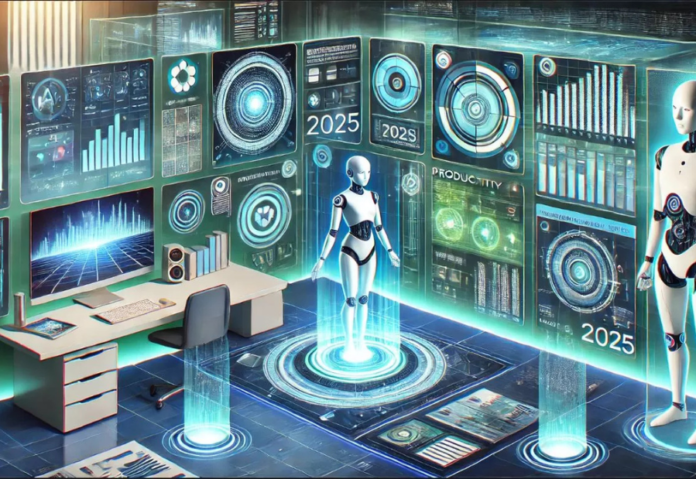Gone are the days of juggling multiple tools to streamline workflows. As we stride into 2025, today’s AI-powered solutions are not just mere tools anymore—they are clever partners that possess the ability to understand context, adapt to our needs, and evolve with our ever-changing demands and styles. From meeting management to content creation, from organizing chaos to streamlining processes, these 9 powerful AI tools are certain to reshape how we approach our mundane tasks.
Today, we shall illuminate the top 9 AI tools to automate your work in 2025. Let’s get started!
- Fathom
Fathom is a versatile AI meeting assistant that flawlessly integrates with Zoom, Google Meet, and Microsoft Teams. Available for both Mac and Windows, this tool has the ability to automatically record, transcribe, and summarize your virtual meetings, allowing you to concentrate on conversations rather than taking notes.
What sets Fathom apart is that it automatically syncs meeting summaries as soon as the call ends, eliminating the need for manual data entry.
- Humata
Humata AI is more like your personal assistant that takes the headache out of handling complex documents. This clever companion not only skims through texts but also breaks down lengthy research content into small, bite-sized summaries. Unlike other AI tools, Humata has the ability to juggle multiple documents like PDFs, Word docs, and PowerPoints at once, compare files, pick out crucial details, and whip up comprehensive reports. It’s perfect for students and professionals diving deep into documents.
The best part about Humata is that it’s free to use until you fall in love with it (which you probably will) and upgrade to a paid plan with more features!
- Notebook LM
Notebook LM is revolutionizing the way content is altered across varied platforms. This genius AI tool possesses the ability to blend scattered research materials like URLs, documents, and PDFs into a cohesive summary. It doesn’t end there; Notebook LM can also turn these summaries into natural dialogue podcasts, as though two people are conversing about your content.
It’s a game-changer for social media enthusiasts as it can convert any research material into small, bite-sized posts for social media platforms.
- SEO Writing AI
SEO Writing AI is an advanced content creation tool that uses artificial intelligence to generate SEO-friendly content, suggest keywords, and improve readability. Designed to help marketers, bloggers, and business owners, it refines their content creation process. It is an ingenious tool to help content creators produce content optimized for search engines across varied platforms.
It’s affordable, easy to use, and has handy features like bulk article creation, brand voice setup, and built-in SEO tools. From blogs to YouTube scripts, it delivers SEO-optimized content with citations and embedded videos that actually rank.
- Text.com
Text.com AI is a comprehensive AI-powered writing platform that combines content creation with SEO optimization capabilities. The tool specializes in generating high-quality written content across multiple formats. This life-saving AI tool creates various types of content, including blog posts, articles, marketing copy, and social media content.
Due to its multilingual support, it can generate and translate content in multiple languages while providing rewording, tone adjustment, and grammar correction features. Another fabulous feature of this tool is that it unifies various messaging platforms into one clean interface, organizing conversations by people, not apps.
- Canva
Canva, used by many but fully understood by few, is a comprehensive design platform that combines traditional design tools with advanced AI capabilities. This magical AI-powered tool automatically generates designs based on user prompts and preferences, enables advanced photo editing with AI-powered tools, and supports team sharing with real-time editing.
It maintains a vast library of stock photos, fonts, and design elements while also allowing users to upload custom assets. Beyond basic design, its Dream Lab feature enables users to create custom stock images with text prompts, magically edit objects in images, or remove unwanted elements. Canva truly allows for limitless design possibilities.
- Claude
ChatGPT’s more personable cousin, developed by Anthropic, Claude is an advanced AI tool that excels in analytics, research, writing, coding, and problem-solving across multiple languages. Its notable capabilities include contextual understanding, ethical decision-making, and versatile format handling, including markdown and code.
Its most loved feature is that it remembers your tone, adapts to your style, and creates human-like content that feels genuinely conversational.
- Pikzels
Pikzels is an AI-powered tool tailored for photographers and visual creators. It enhances and retouches images with precision, offering features like background removal, color correction, and effects application.
Also known as a YouTube creator’s secret weapon, Pikzels can replicate viral thumbnails and titles instantly. By analyzing trends and swapping images, it helps boost click-through rates effortlessly.
- Notion
The Notion AI tool works alongside the platform’s core features like databases, kanban boards, and wikis, making it a comprehensive tool for both individual users and teams focusing on content creation and project management.
Its key features include drafting documents, summarizing meeting notes, structuring blog posts, breaking down projects, and creating actionable items.
In Conclusion
Now that we’ve explored these top 9 groundbreaking AI tools, it’s evident that 2025 will be a pivotal year for workplace automation. It’s not just about how we interact with these tools—it’s vital to understand that each tool serves a unique purpose, dramatically reducing workloads, enhancing creativity, and sparing valuable time for businesses and professionals to focus on strategic thinking and innovation.
Don’t just choose a tool; adapt it to your specific work requirements and ensure it aligns perfectly with your needs. These tools will continue to evolve, striking the perfect balance between accessibility and functionality.






